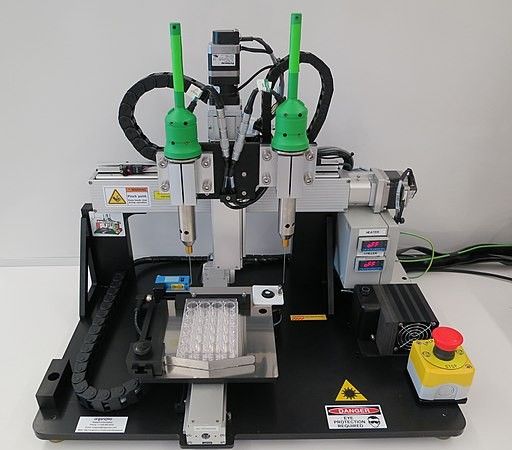Spaceflight is a risky endeavor that can expose astronauts to stressors to the human body, like microgravity, G force, and cosmic radiation. In fact, NASA reported that astronauts who spend six months in space can be exposed to the same amount of radiation as 1,000 chest X-rays.

Various environmental factors can put astronauts at risk for bone loss, central nervous system damage, and cancer. Because of this, medical treatments, like cancer therapy, must be considered when planning for long-haul space missions.
Before developing medical treatments in space, experts must understand how the human body behaves in this foreign environment. This has been the focus of a team of researchers from Tsinghua University, who used a 3D bioprinter to simulate the nature of living human tissues.
Challenges in Using 3D Bioprinter in Space
3D bioprinting is becoming a vital technology for understanding tissue regeneration and other diseases, like cancer. It enables researchers to create realistic models of organs and tissues by incorporating biomaterials, living cells, and other bioactive elements to imitate the real thing.
Regarding astronomy, the challenge in mimicking the behavior of tissues and organs in space is building a 3D bioprinter that works in Earth's orbit. This is because the printer and the live cells must survive the harsh mechanical forces encountered during launch. They should also withstand the difficulty of maintaining living cells and biomaterials in changing temperatures. Moreover, all the tools must be scaled down and function without leaking in a microgravity environment.
READ ALSO: 3D Printed Human Organs: One Step Closer to Reality as Researchers Develop 3D Printable Bioink
Mimicking Living Tissue in Space
To address this challenge, Professor Zhuo Xiong and his team created a solid but lightweight device that is enhanced for 3D printing in space. Their study, entitled "Satellite-Based On-Orbit Printing of 3D Tumor Models," is the first time that on-orbit printing of live tissues has been achieved through a satellite.
To ensure success in space travel, the size and weights of items loaded in a spacecraft must be minimized for better fuel efficiency. This makes producing a scaled-down 3D printer challenging since those found in laboratories worldwide are usually large machines occupying small rooms. They will need innovative engineering skills to shrink them to fit the size requirements of the satellite's cargo load.
After careful planning, the research team developed a miniature 3D bioprinter, which is just the size of a shoebox and weighs only 13 pounds (6 kilograms). It was also designed to withstand the extreme vibrations encountered during satellite launch.
The machine also contains a printing unit made of two motor-controlled syringes filled with cell-based bioinks. Meanwhile, the biological unit consists of two chambers filled with a medium where the printed tissue can be embedded. The two units were connected and sealed from the outside environment with a soft latex film to avoid leakage and maintain internal differential pressure.
Additionally, the device incorporated a microscope to help capture images of the biological samples while in orbit and send them back to Earth for further analysis. According to 3D printing researcher Nieves Cubo-Mateo from Nebrija University in Spain, fitting a 3D bioprinter device and a confocal microscope under a small dimension is already an achievement in bioprinting and space engineering.
On June 7, 2023, the equipment was launched from China's Jiuquan Satellite Launch Center. Upon reaching the orbit 311 miles (500 kilometers) above the Earth's surface, the device conducted initial tests by bioprinting a lung cancer tumor model.
RELATED ARTICLE: Uganda's First-Ever Satellite Has Equipment for 3D Bioprinting Human Organs to Print Tissues in Space
Check out more news and information on 3D Bioprinting in Science Times.




![Earth's Quasi-Moon Kamo‘oalewa Could Originate From Lunar Surface Not Asteroid Belt [Study]](https://1721181113.rsc.cdn77.org/data/thumbs/full/53275/89/56/50/40/earths-quasi-moon-kamo-oalewa-could-originate-from-lunar-surface-not-asteroid-belt-study.png)









